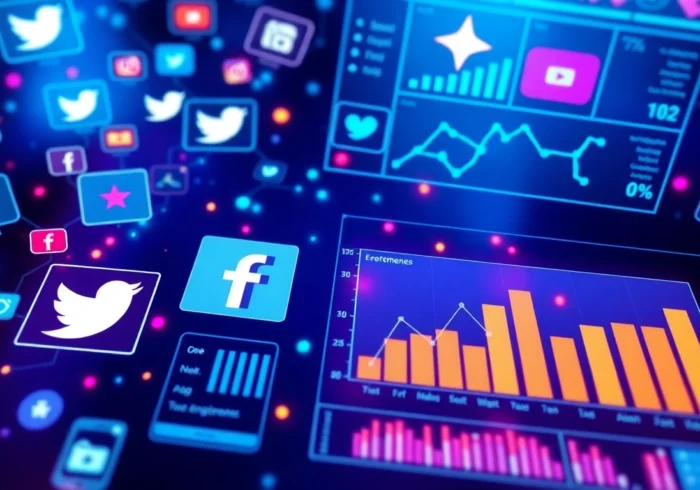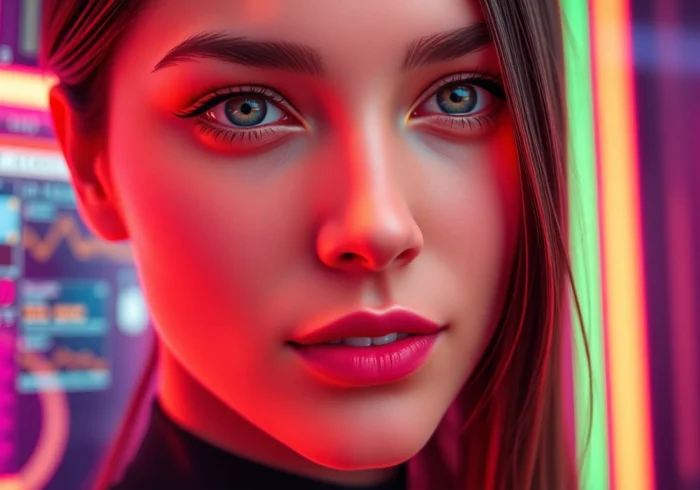Exploring the World of No-Restriction AI Image Generators in 2025
As artificial intelligence technology advances, so too does its capacity to generate highly realistic, customizable, and diverse visual content. In 2025, a significant evolution has taken place in the field of AI image creation, especially concerning tools with minimal or no restrictions. These ai image generator no restrictions platforms empower creators to push creative boundaries while navigating complex ethical and legal landscapes. This comprehensive exploration aims to provide an in-depth understanding of these tools, their key features, applications, challenges, and future trends.
Understanding AI Image Generators Without Restrictions
What Are No-Restriction AI Tools?
No-restriction AI image generators refer to artificial intelligence platforms that allow users to produce visual content without the typical constraints imposed by content moderation, censorship, or filtering. Unlike traditional tools that often block or limit certain themes—often due to legal, ethical, or platform policies—these unrestricted generators prioritize creative freedom. They enable users to create a broad spectrum of images, including adult, provocative, or controversial content, by leveraging advanced neural network architectures trained on diverse datasets. These tools harness cutting-edge models such as GANs (Generative Adversarial Networks), diffusion models, and deep learning algorithms to deliver high-fidelity visuals at remarkable speeds.
Importance of Boundless Creativity in Digital Art
Boundless creativity is the cornerstone of innovative digital art. No-restriction AI tools provide artists, marketers, researchers, and developers the means to explore unique concepts, styles, and subject matters that might be restricted elsewhere. This freedom fosters experimentation, allowing for the generation of avant-garde art, virtual characters, adult content, and personal explorations without fear of censorship. Such flexibility is vital for pushing the boundaries of visual storytelling, developing new aesthetic standards, and catering to niche markets that demand highly specialized content. Moreover, these tools support rapid prototyping, concept visualization, and immersive virtual worlds, making them indispensable for the evolving digital landscape.
Legal and Ethical Considerations
Despite their powerful capabilities, no-restriction AI image generators raise significant legal and ethical questions. The unrestricted nature may lead to misuse for creating non-consensual imagery, deepfakes, or content infringing on intellectual property rights. Developers and users must remain vigilant about adhering to laws governing content creation, privacy, and consent. Many platforms implement user agreements, age verification, and usage policies to mitigate misuse, but enforcement remains challenging. Ethical considerations include promoting responsible use, preventing harm, and respecting individual rights. Striking a balance between creative freedom and societal responsibility is crucial for the sustainable development and deployment of these tools.
Key Features of Leading AI Generators with No Restrictions
Customization and Realism
Advanced customization capabilities differentiate top-tier unrestricted AI image generators. They provide extensive control over visual elements—ranging from facial features, attire, environment, to emotional expressions—enabling users to craft highly personalized images. Realism is enhanced through fine-tuned rendering algorithms, high-resolution outputs, and style transfer techniques. For example, some platforms utilize deep neural networks trained on diverse datasets to generate hyper-realistic images that mimic real-world textures, lighting, and anatomy. This level of detail is essential for applications like virtual influencers, adult entertainment, and narrative storytelling where authenticity enhances engagement.
Speed and Output Quality
Speed remains a critical factor for creative workflows. Leading platforms leverage optimized GPU processing and parallel computation to generate images in seconds or minutes, even for complex scenes. The quality of outputs is measured by resolution, clarity, and fidelity to prompts. State-of-the-art models such as diffusion-based AI generate high-resolution images with intricate details, subtle shading, and accurate color reproduction. These features ensure production-ready assets for professional use, from marketing campaigns to artistic portfolios. Continuous advancements are pushing the boundaries of real-time generation, making instant visual iteration increasingly accessible.
Content Versatility and Style Options
The versatility of unrestricted AI tools is evident in their ability to produce a wide array of styles—from photorealism and anime to cartoon and abstract art. Multi-style generation support allows users to specify artistic influences, mood, and visual themes seamlessly. This flexibility is crucial for professionals seeking to adapt visuals for different audiences, mediums, or branding strategies. Some platforms incorporate style transfer algorithms, enabling users to transform existing images into new artistic expressions. This broad spectrum of style options ensures that whether the goal is soft romance, cinematic drama, or edgy adult art, the platform can deliver suitable outputs.
How to Choose the Best AI Image Generator No Restrictions
Assessing User Interface and Usability
For optimal productivity, an intuitive interface is essential. Top tools feature user-friendly layouts, straightforward prompt input mechanisms, and real-time preview windows. An easily navigable UI accelerates workflow, minimizes learning curves, and enhances creative experimentation. Consider platforms that offer templates, preset styles, and guided tutorials to support beginners while providing advanced options for seasoned users. Compatibility across devices and integration with creative software (like Photoshop or Blender) further extends usability.
Evaluating Output Consistency and Quality
Consistency in style, color palette, and detail is vital for maintaining brand identity and meeting project standards. A reliable AI generator should produce similar results when given similar prompts over multiple sessions. Evaluation metrics include resolution, artifact presence, and adherence to prompt semantics. Some platforms offer validation tools, adjustable parameters, and post-processing options to refine outputs. User reviews, sample galleries, and third-party benchmarks can aid in assessing a tool’s reliability.
Security, Privacy, and Ethical Use Policies
Since unrestricted tools can generate sensitive content, security measures are paramount. Look for platforms with robust data encryption, transparent privacy policies, and user authentication. Ethical use policies should explicitly prohibit illegal activities, non-consensual imagery, and copyright infringement. Platforms also benefit from community monitoring, reporting mechanisms, and AI moderation to prevent misuse. Choosing a provider committed to responsible AI practices ensures compliance with legal standards and aligns with ethical considerations.
Practical Applications for No-Restriction AI Image Generators
Creative Projects and Digital Art
Unrestricted AI tools revolutionize artistic creation by removing traditional limitations. Artists can generate concept art, experimental pieces, and multimedia installations efficiently. Studios incorporate AI-generated assets into comic books, animations, and virtual environments, accelerating development timelines. For example, hyper-detailed fantasy landscapes or character designs can be produced rapidly, fostering innovation and expanding artistic horizons.
Marketing and Virtual Influencers
Brands leverage AI-generated virtual influencers to engage digital audiences. These personas can perform marketing campaigns, host virtual events, or promote products without the logistical challenges of managing real individuals. No-restriction AI enables the creation of influencer content in diverse styles, including edgy or provocative themes that appeal to niche markets or adult-oriented brands. Such virtual personas offer scalable, customizable, and cost-effective branding solutions.
Adult Content and Ethical Boundaries
The adult entertainment industry has embraced AI image generators to produce bespoke content while maintaining privacy and reducing production costs. However, this raises complex ethical questions about consent, exploitation, and distribution. Responsible use involves strict adherence to laws, consent protocols, and age verification. Developers are introducing safeguards, such as watermarking and usage rights, to prevent misuse. Ethical frameworks should guide creators to avoid harmful practices, ensuring AI is used to augment human agency responsibly.
Future Trends and Innovations in Unrestricted AI Image Generation
Advancements in Emotional AI and Personalization
Emerging AI models are increasingly integrating emotional intelligence, allowing images to convey subtle feelings, moods, or narratives. Personalization features enable the creation of visuals tailored precisely to user preferences, emotional states, or contextual cues. This enhances immersion in virtual environments, deepens user engagement, and supports applications like mental health simulations or personalized entertainment.
Integration with Video and Animation Technologies
The convergence of image and video AI fosters the development of fully animated scenes, virtual avatars, and real-time synthesis. Platforms adopt diffusion and generative adversarial techniques to produce not just static images but also videos with realistic motion, expressions, and backgrounds. This evolution propels industries such as gaming, film, and adult entertainment toward highly immersive, AI-driven content creation.
Regulatory and Ethical Framework Developments
As unrestricted AI content proliferates, policymakers worldwide are crafting regulations to curb misuse while promoting innovation. Proposed frameworks include licensing, usage tracking, and AI ethics standards. Industry collaborations aim to develop universal codes of conduct, ensuring that AI-generated content upholds human rights, privacy, and consent. Transparency in algorithms and clear accountability structures will be fundamental in balancing freedom with responsibility.



